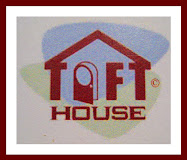Coping with sensory processing disorders can cause daily
stress for children and their caregivers. Sensory processing disorder affects those afflicted in areas as basic as eating, being comfortable around other people, and in many cases tolerating the impact of the world around her or him, i.e. the feel of clothing, the sensation of surfaces underfoot, environmental sounds and smells. Readers who have sensory processing disorder, or know someone who does, feel free to add more examples of the effects of this disorder in the comments section after this post.
Instructor Sarah Seder presents “Dance, the
Senses and Emotion” for students aged 9 and over. Among other things, this program in Everett,
Washington works to helps students to “reorganize (their) central nervous
sensory system”, become more aware of their five senses and express
emotions.
Dance, the Senses and Emotion
for students with sensory processing issues - ages 9+
Instructor: Sarah Seder
Wednesdays, beginning September 9, 2015
4:00 - 4:45 pm
Fall tuition $150 - 11 wks
$30 Annual Registration Fee billed in addition to Fall
tuition parents or caregivers are asked to remain on-site during
class-time.
Designed for students with sensory processing issues, each
class begins with a physical warm up which includes the Brain Dance, basic dance technique, core strength building exercises, activities
to help students recognize their 5 senses, calming breathing practices and yoga stretches. Dancers work together to choreograph dances integrating movement concepts such as speed, size, and level. Students learn to use dance as a way to express a variety of emotions. The goal of this class
is to help students discover the joy of moving in a safe,
fun environment using movement patterns that healthy human beings naturally move
through in the first year of life. Cycling through these patterns at any age,
daily or weekly while sitting or standing, has been found to be beneficial in reorganizing
our central nervous system.
(http://creativedance.org/about/braindance/)
Sarah Seder has been teaching at The Dance School since
2007. She received her
degree in both dance and psychology from Bard College. She
recently received
continuing education training in Social Emotional Learning
and Executive Functioning
Skills through Bright Avenues School.
2821 Rockefeller Ave
Everett WA 98201
425-259-6861 admin@thedanceschool.org
www.thedanceschool.org
















